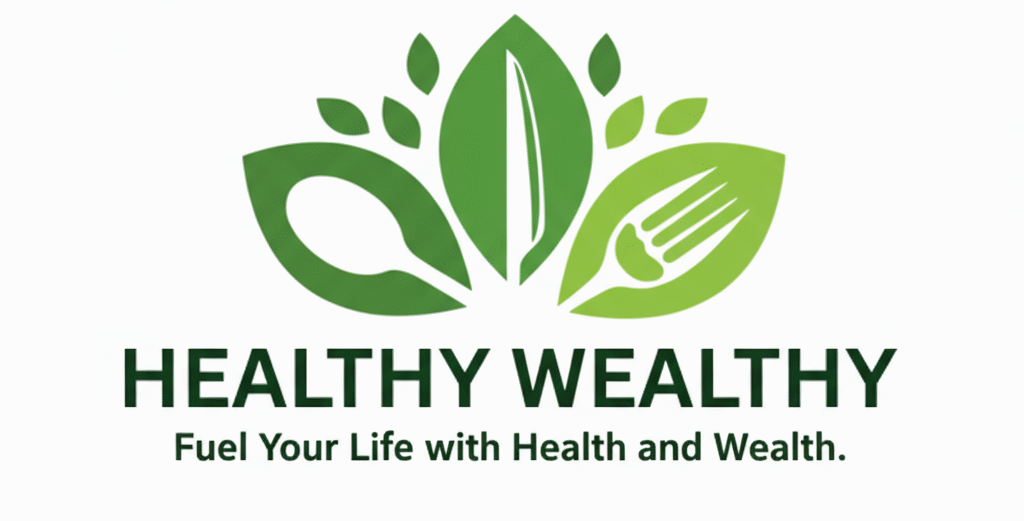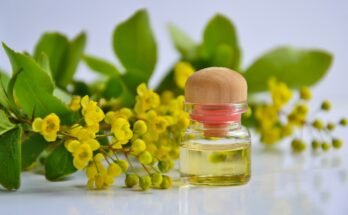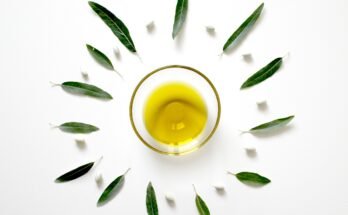Spider veins can appear as red patterns, blue patterns, or purple patterns on the surface of the skin, especially around the legs, face, and other areas of the body. These web-like marks, caused by dilated blood vessels, are often harmless but may lead to discomfort and cosmetic embarrassment, particularly in prominent areas like the lower legs. Factors such as the aging process, visible veins, thin skin, and exposed skin contribute to their development over different life stages.
To reduce appearance and improve vein health, using natural remedies is common. Staying hydrated, maintaining a healthy weight, wearing compression stockings, and including regular exercise with elevating legs are all effective methods that help naturally. While these approaches work well for many, persistent cases and severe cases may require professional treatment or other treatment options. Facial spider veins are often preventable, and though it may feel late, it’s still good to talk about why they happen and how you can remove them.
Why do spider veins occur?

Visible vessels often develop in a network that may look like a spider’s web or starburst pattern, usually seen in common areas like the leg, face, or behind the knee. The causes vary, from hormonal fluctuations and injury to sun exposure, medications, or even alcohol consumption. Facial veins and other red, blue, or large marks on the skin can also form due to genetics, especially if parents had them. Lifestyle factors such as obesity, a sedentary lifestyle, or standing for long periods on the feet during the day can also lead to the need to treat spider veins on the body.
- Trauma to the skin increases the risk of spider veins
- Anabolic steroids and other medications may trigger changes
- Hormonal fluctuations are a frequent contributor in both genders
- Genetics plays a key role when one or both parents are affected
Options in Natural Spider Vein Remedies
Natural remedies are often the first choice for spider vein sufferers who want to eliminate the visible vessels without turning to medical treatment. This natural approach is especially attractive because it avoids the need for a prescription, clinical therapy, or visits to a physician. Many helpful solutions can be found right in the neighborhood grocery store, making them easy and accessible. These popular options for easing spider veins naturally have gained trust for being both safe and convenient.
Apple Cider Vinegar
Apple cider vinegar is a common home remedy used to help with various conditions and concerns, including spider veins and varicose veins. Known for boosting healthy blood flow and improving circulation, it may reduce the formation of these veins over time. Some users try applying it directly to the skin, often soaking a cloth, placing it on the affected area, and leaving it wrapped for a period of 20 to 30 minutes at a time.
Diet
Eating the right foods can help reduce inflammation and promote healthy blood flow, which may keep spider veins from getting worse. A diet rich in fiber, antioxidants, and essential nutrients like magnesium, potassium, and omega-3 fatty acids supports overall health and the circulatory system. To protect the body for the long term, avoid saturated fats, processed sugar, alcohol, and too much sodium. These changes help maintain healthy circulation and prevent future vein issues.
Herbal Supplements
Some supplements are a popular remedy for spider veins and a myriad of other ills, as they respond well to both external application and oral doses. Natural options like witch hazel, gingko biloba, bilberry, and horse chestnut may ease symptoms such as heaviness or aching in the legs, especially by the end of the day. Herbs like garlic, turmeric, cayenne pepper, and butcher’s broom are often a good choice for improving the condition of veins gently over time.
Essential Oils
Essential oils offer a natural solution for improving health conditions, including spider veins, when applied carefully to the skin. They can be used in a bath, as a massage oil, or through a hot compress or cold compress. Oils like tea tree, geranium, and yarrow work well when used directly, but it’s important to avoid any that may cause irritation or burning. Their soothing properties help support the skin naturally without harsh chemicals.
- Lavender
- Cypress
- Lemongrass
- Yarrow
Massage
Massage is an effective way to stimulate healthy blood circulation and may help relieve pain or swelling often associated with spider veins. It should be done by a licensed therapist with proper experience in treating vein conditions.
What Are Spider Veins?

Spider veins are small, thread-like blood vessels that show up as red, blue, or purple lines in a web-like pattern near the skin’s surface, especially on the legs and face. They can form due to genetics, hormonal changes, obesity, sun exposure, prolonged periods of sitting or standing, or a condition like chronic venous insufficiency where blood flow becomes impaired. Though often removed for cosmetic reasons, untreated cases may lead to vein disease, discomfort, and reduced vein health. Treating them early can improve blood circulation, alleviate symptoms such as leg pain, cramping, and a heavy feeling or tired feeling in the legs.
Symptoms and Appearance
Spider veins can bring more than just a cosmetic issue—they often start with a symptom like itching around the affected area or cramping that shows up at night. Some people feel a heavy feeling or tired feeling in their legs, especially after long periods of standing or sitting, which may worsens the discomfort. There might also be swelling, either mild or moderate, along with throbbing, burning, or other strange sensations in the affected veins.
How to Get Rid of Spider Veins Naturally?
Getting rid of spider veins naturally involves lifestyle changes and natural remedies, both considered effective options. These two categories help manage symptoms and improve overall vein health without medical procedures.
Lifestyle Changes

A few diet changes can help manage spider veins more naturally. Including anti-inflammatory foods such as citrus fruits, berries, nuts, and leafy greens may reduce inflammation and support healthy blood circulation. Nutrients like vitamins C and vitamins E, along with staying hydrated by drinking water, are important to maintain vein health and ensure improved blood flow.
Adopting healthy habits like low-impact exercises, including walking and swimming, can stimulate circulation and strengthen leg muscles. These exercise routines form an essential lifestyle change to prevent new spider veins, reduce appearance of existing ones, and alleviate symptoms of varicose veins. Consistent regular physical activity can also prevent blood pooling in the veins, helping blood move efficiently.
Natural Remedies and Treatments
Natural remedies like topical treatments are widely used for managing spider veins, especially when applied to affected veins. Using essential oils such as lavender or rosemary, along with apple cider vinegar and witch hazel, may help reduce inflammation, improve appearance, and offer relief through their anti-inflammatory properties when applying them to the affected area.
Effective home remedies include a cold compress, elevating legs several times a day, and wearing compression stockings to reduce pressure in the veins. These steps help alleviate leg pain, promote smooth blood flow, and may prevent blood pooling, especially after long periods of sitting or standing.
In addition, herbal remedies and supplements such as horse chestnut extract, Gotu Kola, and grape seed extract provide antioxidant properties that support vein health. They can also strengthen vein walls, reduce swelling, and improve blood circulation as part of a consistent care routine.
Is the Natural Option Really Better than Medical Intervention?
Natural remedies like diet changes, exercise, and home remedies are often more affordable and accessible. They may reduce appearance, improve blood flow, and provide temporary relief through herbal supplements such as horse chestnut extract or Gotu Kola. However, these options may require ongoing application, can interact with medications, and sometimes lead to side effects like gastrointestinal discomfort or allergic reactions.
Medical treatments are usually seen as the better option when the goal is to get rid of spider veins at the root cause. Options like sclerotherapy, laser therapy, and other minimally invasive treatments work by injecting solutions or using lasers to close off affected veins, allowing blood to be rerouted through healthier veins. Each approach has its own pros and cons, so comparing natural treatments and medical interventions depends on the individual’s needs.
When Should I Seek Medical Care?
While natural remedies and lifestyle changes are often beneficial, certain symptoms and complications may require professional medical attention. If spider veins cause severe pain, begin to bleed, or show signs of a serious condition, it may be an indication of underlying issues that need a full medical evaluation.
The appearance of ulcers or open sores around spider veins should be treated as a serious concern. These may signal chronic venous insufficiency and often call for immediate medical care to prevent infection and avoid further complications that can worsen over time.
Ignoring these signs can lead to serious complications such as blood clots, deep vein thrombosis, or DVT, which are dangerous conditions. In such cases, protecting your health means seeking professional intervention as early as possible to avoid permanent damage or advanced progression.
How to get rid of spider veins without surgery
Several non-surgical treatments can help get rid of spider veins without the need for surgery. A widely effective option is sclerotherapy, which works by injecting a solution into the vein, causing it to collapse and fade. This method is used for smaller varicose veins, with a cost between $350 and $500 per session, often requiring multiple sessions for optimal results.
Laser treatment uses focused light to target and apply heat to the affected vein, offering a safe non-invasive option for small vessels. It generally costs around $300 to $600. Veinwave therapy treats tiny veins on the face, legs, and other superficial veins using microwave energy, with pricing from $200 to $400 depending on the treatment area.
For more advanced cases, radiofrequency ablation is used to close off larger varicose veins using radiofrequency energy. This treatment helps in preventing future symptoms, and the cost ranges from $1,000 to $3,000, depending on the severity and number of veins treated.
How Long Does it Take to See Results After Spider Vein Treatment?
The time it takes to notice results after spider vein treatment often varies by method. Most treatments show initial improvements that become visible in a few weeks, while full results may appear over a few months. Patience is important as the body slowly absorbs the treated veins.
Though those veins may be permanently closed and not return, new spider veins can develop due to underlying causes like genetics or lifestyle factors. To limit new formation, it’s helpful to maintain a healthy lifestyle, schedule regular follow-ups, and take steps to minimize the risk of recurrence.
Tips to Avoid Spider Veins
Preventing spider veins starts with adopting healthy habits that support good blood circulation and overall vein health. Using compression stockings helps improve blood flow in the legs by applying gentle pressure, which is especially helpful during long periods of standing or sitting.
To avoid problems caused by prolonged sitting or prolonged standing, especially in jobs with extended periods of stillness, it’s important to take regular breaks. Simple movements like flexing the legs, walking around, or doing light leg exercises keep blood flowing smoothly and help prevent blood pooling in the veins.
Wearing tight clothing around the waist, legs, or pelvis may restrict blood flow and contribute to vein formation. Choosing loose-fitting, comfortable clothing instead can promote healthy circulation and reduce unnecessary vein pressure.
Other helpful tips include limiting alcohol consumption, which may lead to dilated blood vessels and increased pressure. Daily use of sunscreen protects the skin from sun exposure, especially on the face. A high SPF blocks UV damage, helping to protect blood vessels and lower the likelihood of new veins forming.
Spider Veins vs Varicose Veins
Spider veins and varicose veins are both vascular conditions that affect blood vessels, but they differ in characteristics and severity. Spider veins appear on the skin’s surface as red, blue, or purple web-like patterns and usually cause minimal discomfort, though itching, mild swelling, heavy feeling, or tired feeling in the legs can occur.
Common causes include genetics, hormonal changes, prolonged periods of standing, sitting, and too much sun exposure. Many people treat them naturally by improving healthy blood circulation through regular exercise, a balanced diet rich in vitamins C and vitamins E, and staying hydrated. Other natural remedies include apple cider vinegar and herbal supplements like horse chestnut extract.
Preventive habits such as compression stockings, elevating legs, avoiding tight clothing, and using sunscreen can help prevent or reduce the appearance of spider veins. For persistent cases, minimally invasive treatments such as sclerotherapy and laser therapy are often recommended.
Varicose veins are larger, twisted veins that often bulge from the skin’s surface and cause significant discomfort, including leg pain, cramping, heavy sensation, and aching sensation. In severe cases, symptoms can include skin changes, ulcers, and chronic venous insufficiency that affect mobility and comfort.
They often develop when vein walls weaken, and valves fail to function properly, causing blood flowing backward and pooling in the veins. Risk factors include obesity, pregnancy, and formation due to inactivity. Home remedies such as hot compresses, cold compresses, elevation, and essential oils may reduce inflammation and support better vein health, while effective treatments like endovenous laser therapy, radiofrequency ablation, and other minimally invasive procedures target the root cause to improve overall vein health.
Want to Remove Spider Veins?
To get rid of spider veins naturally, many people begin with natural methods like regular exercise, a healthy diet, and wearing compression stockings. These natural remedies are not only cost-effective and accessible but also fit easily into a daily routine. By managing and reducing visible veins with these healthy habits, it’s possible to improve vein health and delay or avoid invasive treatments.
While these options can be effective, it’s smart to monitor your condition and seek advice from a healthcare professional if needed. Keeping up with regular check-ups allows early detection of any issues and ensures you’re supporting your health in the right way. Even when managing veins at home, guidance from a professional helps catch concerns early and tailor a safe care plan.
What Causes Spider Veins on the Face?
Spider veins on the face often develop when capillaries under the skin become dilated due to poor blood circulation, aging, or damaged skin. These broken blood vessels can appear at any age, though some people have a higher chance of developing them based on their environment, habits, or health history.
- Genetics: If family members have facial veins, the chances of getting them increase with age.
- Sun: Too much sun exposure causes sun damage, which can enlarge blood vessels and push them closer to the skin.
- Weather: Drastic changes in temperature affect blood circulation, making the skin flush and veins burst.
- Pressure: A sudden change like a hard sneeze or vomiting can create extreme change in pressure.
- Hormones: Pregnancy and hormonal changes during or after giving birth can trigger visible veins.
- Irritants: Exposure to environmental pollutants, chemicals, or conditions like rosacea can leave flushed, red skin and enlarged veins.
Home Remedies for Spider Veins on the Face
Some people find relief from spider veins on the face by using simple home remedies. These natural methods can help reduce appearance and calm skin redness when used regularly.
- Cold: A cold compress like an ice pack or frozen peas can be applied after sun exposure or heat exposure to soothe the area and help burst blood vessels fade.
- Astringent: Apple cider vinegar acts as an astringent, pulling tight the skin and working to reduce redness and tighten facial veins naturally.
- Gel: The aloe vera gel is useful for treating inflamed or red areas. While some research supports its benefits, it may dry out skin cells with repeated use.
- Supplements: Vitamin C supplements play a key role in keeping broken blood vessels healthy and can strengthen skin when part of a healthy routine.
For more lasting results, sclerotherapy, laser therapy, or intense pulsed light therapy (IPL) are common professional treatments. Note that Delaware Advanced Vein Center does not offer spider vein removal for the face.
How to Prevent Spider Veins on the Face
Keeping facial spider veins from appearing often starts with simple daily habits. Though they may cause no pain, their appearance can still be frustrating. It helps to know the direct cause and take steps to treat or prevent them before they become noticeable. In some cases, broken blood vessels may point to an underlying medical condition that needs a vein specialist’s examination and diagnosis.
- Heat: Stay away from extreme heat sources like spas, saunas, or hot water, as they may dilate blood vessels and increase chances of visible veins.
- Sun: Limit sun exposure by wearing sunscreen, a hat, and long layers of clothing to reduce chances of sun damage.
- Protection: Use protective gear like facemasks and helmets during activities such as baseball, cycling, or motorcycle riding to avoid injury.
- Triggers: Avoid vasodilators like caffeine, spicy foods, and alcohol, as they cause vessels to fill with blood, making veins more visible.
How Do You Get Rid of Spider Veins Naturally?
To treat spider veins naturally, focus on improving healthy blood circulation with regular exercise, a balanced diet, and staying hydrated. Adding natural remedies like apple cider vinegar, herbal supplements, and horse chestnut extract, along with vitamins C and vitamins E, may help reduce visible veins and support long-term skin health.
Can I Treat My Spider Veins Myself?
Yes, some self-care tips may help prevent new varicose veins and spider veins, though they won’t remove existing ones. Wearing compression stockings applies steady pressure to help move blood back to the heart, which can lessen swelling in the lower legs and reduces risk of forming a blood clot.
Does Turmeric Get Rid of Spider Veins?
Turmeric contains curcumin, a natural compound known for its antioxidant properties that may support vascular health. Combined with garlic, these medicinal and delicious ingredients offer anti-inflammatory and circulatory benefits that can help alleviate the appearance of spider veins over time.
What Vitamin Deficiency Causes Spider Veins?
Lack of vitamin C in the diet can weaken vein valves, lowering their strength and making it harder for them to keep pumping blood to the heart. Without enough support, sturdy, elastic veins lose function, causing blood pools that lead to a visible spider vein as it forms, disrupting good circulation.

Lisa Caldwell is a clinical health writer and certified diabetes educator with a strong background in pharmacology and metabolic health. With over 12 years of experience in patient education, she specializes in translating complex research on GLP-1 medications like Ozempic into clear, practical guidance.




